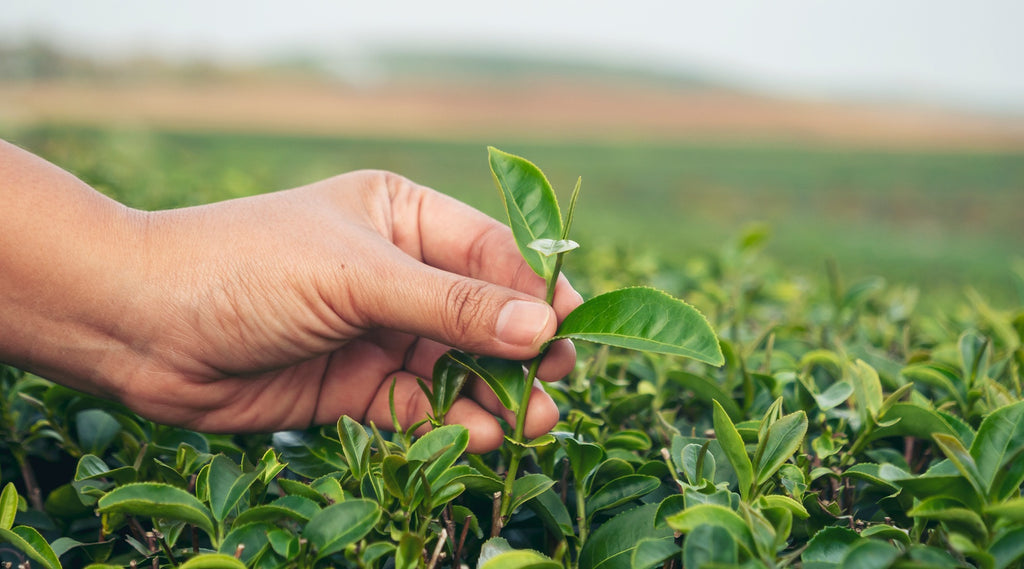How is Tea Grown and Graded?

 Although we all know that tea, more specifically the “tea” plant Camellia sinensis, is in fact a plant. But sipping on that morning cup of Earl Grey took many growing seasons, careful farming, and tedious processes to give you that calming start to your day. So, how does that little leaf make it to your cup? Where does tea come from and how does it get transformed to your favorite morning jolt?
Although we all know that tea, more specifically the “tea” plant Camellia sinensis, is in fact a plant. But sipping on that morning cup of Earl Grey took many growing seasons, careful farming, and tedious processes to give you that calming start to your day. So, how does that little leaf make it to your cup? Where does tea come from and how does it get transformed to your favorite morning jolt?

This plant is grown everywhere except North America and Europe, so many people in the “west” may not know much about this plant. Tea plants require even and consistent moisture, cooler tropical climates, and shielding from strong afternoon sun. They are hardy in USDA growing zones 7-9 but are not often used for greenery in the garden for their tedious growing requirements. Because of their growing requirements, they are grown in regions of the world that can naturally give them what they need without having to do extensive farming. The regions of the world where this plant originates from will naturally dominate the production of it, namely China, India, Sri Lanka, Vietnam, Thailand, Japan, and many other Asian countries. However, through trading and cultivation, many other regions of the world produce copious amounts of tea, such as Turkey, Kenya, Uganda, Malawi, and Argentina. Anywhere there is dark green on the map, those countries produce the most tea, weighed by tons.

So, how do farmers pick and harvest these plants? That question requires us to discuss tea grading. Tea grading is a system that originates from India and Sri Lanka that “ranks” each tea leaf based on where it is picked from the plant. The diagram on the left shows a fitting example of this system. It is important to note that this system is not necessarily a system that denotes better taste, however the higher the grade, the more expensive and prized that tea is.
When farmers or combines pick the tea leaves, they will only pick the top leaves off the stem, anything from “Pekoe” up. These leaves will have the most caffeine and have a more consistent flavor. Hand-picking leaves is the most time-consuming harvesting method; however, it is required for some teas to have a grading of “Tippy Golden Flowery Orange Pekoe” (TGFOP for short) since only the top leaves without tears can be used for this grading. The higher quality teas in this system are teas that include only the top buds of the plant, are whole leaves (not ripped or pieces), and come from the first pick of the growing season, called a flush.
Once again, it is especially important to note that just because a tea is not classified by an alphabet of gradings (for example: SFTGFOP) does not make it a low-quality tea for taste. Most teas that are mass produced, think Lipton or Twinings, would be graded incredibly low in this ranking system. That does not mean that the teas are of bad tasting quality though. This is grading the tea leaf shape and quality, not the taste of the tea after it is brewed.
So, once the tea is harvested, it is then sent to processing, where these tea leaves make their magical transformation to become anything from green tea to white tea to black tea or even pu’er tea. We will cover this process in another blog, so do not worry. Only so much fun can be had in one article.
Some of the teas we sell in our stores and for our retail teas have these rankings in case you were wondering. The Assam tea, grown in the Assam region of India, has a grading of TGFOP, meaning that it only contains the top buds of the tea leaves. The Earl Grey tea we sell is graded Ceylon OP, meaning that it is an Orange Pekoe tea that comes from the island of Sri Lanka.
If you are interested in trying some of these teas, come by and see any of our stores or order a tin of it for yourself! Hopefully, this blog will help you learn and appreciate the art of tea and how we see tea people just like we see coffee people!
This blog was written by Brett Evans
